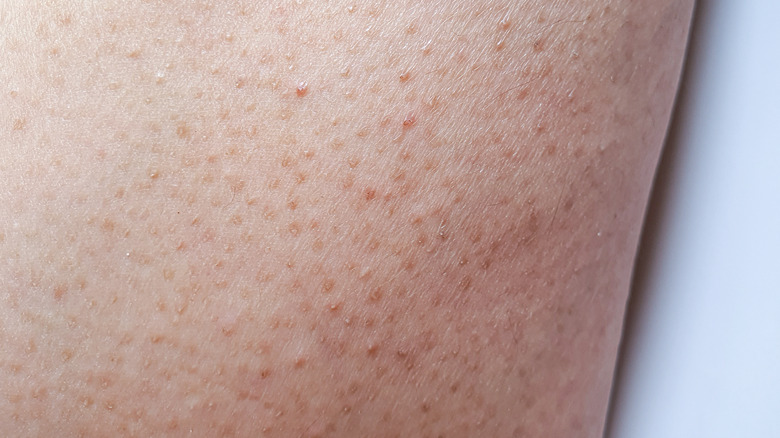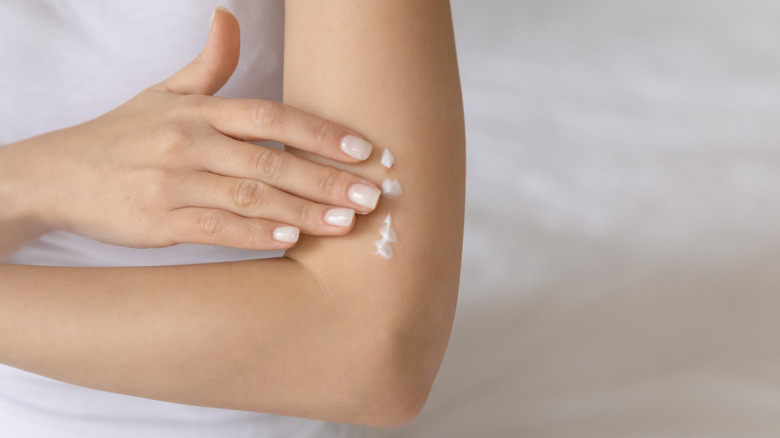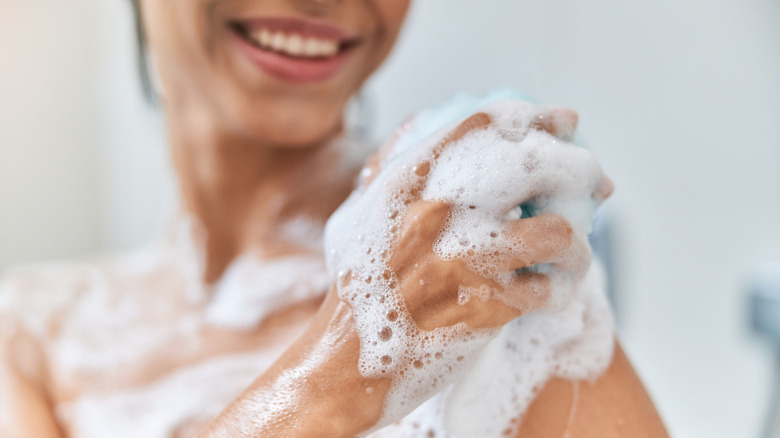Here's Why You Have Little Bumps On Your Arms
Have you ever put together the best summer outfit and then looked in the mirror, or even worse, stared down at your arms at an event or gathering, only to realize your skin was covered in tiny bumps? The majority of small bumps on the arms (and sometimes thighs) are known as keratosis pilaris (via Healthline). While these bumps can definitely be unsightly, they're not anything to worry about.
Keratosis pilaris is a skin condition where pores become blocked. It's also known as "chicken skin" (via Cleveland Clinic). If you look very closely, you might even notice a tiny whitehead, similar to a pimple, in some of them. The majority of them will just look like flat red or brown bumps.
They aren't very itchy, so if you have bumps with an intense itch, that may be hives or another skin condition. The first thing to do when you notice the bumps is to see a doctor and get a diagnosis. Once diagnosed, there are some strategies you can try.
What causes keratosis pilaris
Naturally, you first want to understand how keratosis pilaris occurs. Keratin is a protein naturally found in skin that works to protect skin from bacteria and infection (via Mayo Clinic). When this protein collects around your hair follicles, it clogs the pores, and keratosis pilaris is the result.
Like many skin conditions, the times in life when it tends to be the worst include times of growth. For this reason, it's common in babies, teens, and in young adulthood (via WedMD). However, it's still possible to have it appear at any age.
You might wonder why you have them, especially when everyone around you seems to have baby-fine skin. The truth is that there is a genetic component, so if members of your family have it, you may be destined to have it, at least for a while. If you have atopic dermatitis, that puts you at higher risk for keratosis pilaris, too (via Cedars Sinai).
Treating keratosis pilaris
Finding these small bumps on your arms can be frustrating, especially since it can be difficult to get them to go away. Often the bumps go away on their own as you age, without any additional treatment. However, it may also help to exfoliate regularly. The American Academy of Dermatology Association recommends using a simple loofah or a washcloth to gently brush away the dead skin cells. Exfoliating gloves would likely do the trick, too. Yet, you don't want to scrub your skin, because that can make them worse.
Then it's time to moisturize. You should use always use moisturizer, even if you have oily skin. Look for one that is oil free and contains urea or lactic acid. Moisturize at least two or three times a day, once after a shower and then whenever your skin feels dry. Over time, you may start to notice that the bumps lessen and gradually fade away.


